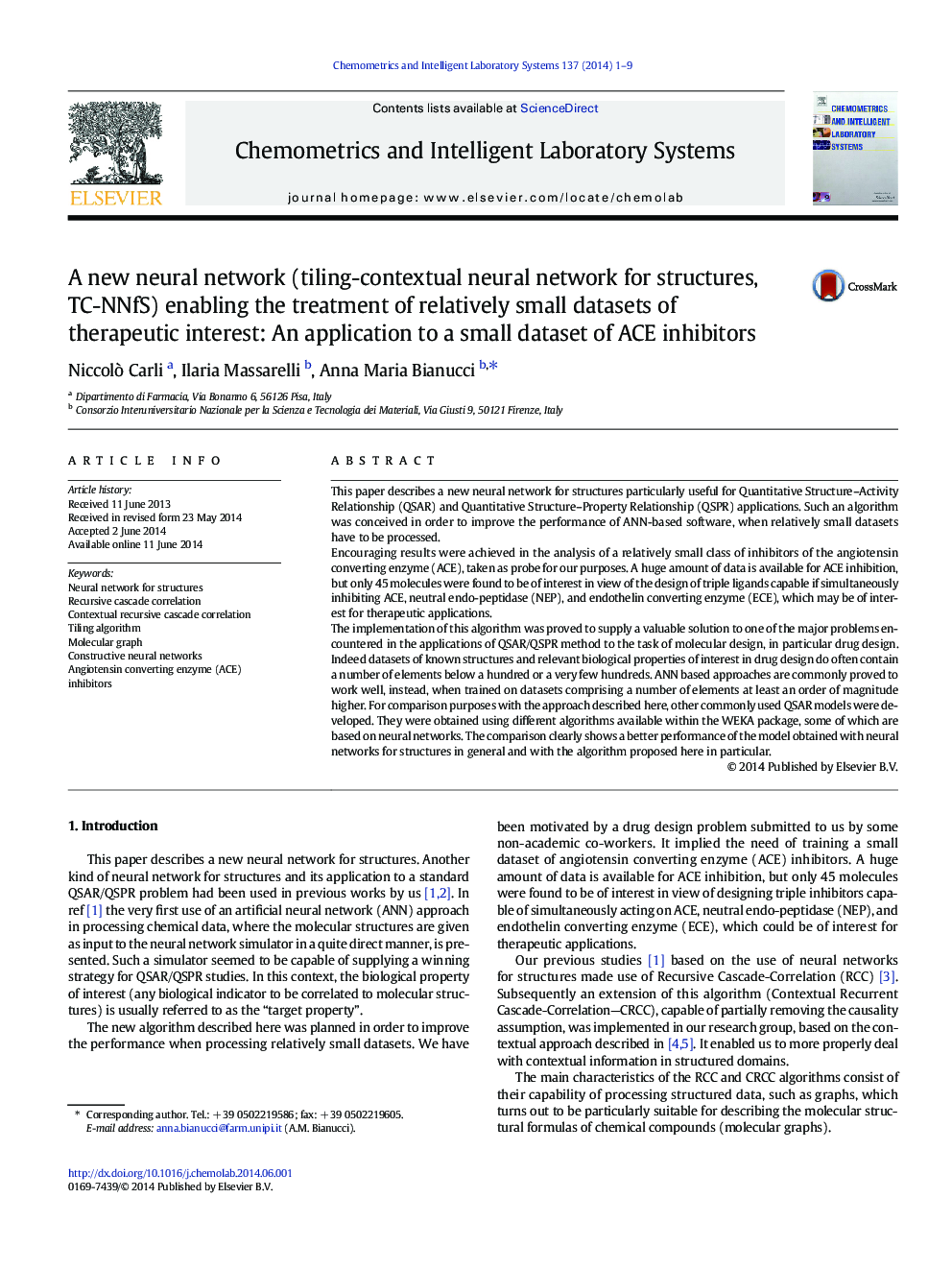| کد مقاله | کد نشریه | سال انتشار | مقاله انگلیسی | نسخه تمام متن |
|---|---|---|---|---|
| 1179689 | 1491541 | 2014 | 9 صفحه PDF | دانلود رایگان |

This paper describes a new neural network for structures particularly useful for Quantitative Structure–Activity Relationship (QSAR) and Quantitative Structure–Property Relationship (QSPR) applications. Such an algorithm was conceived in order to improve the performance of ANN-based software, when relatively small datasets have to be processed.Encouraging results were achieved in the analysis of a relatively small class of inhibitors of the angiotensin converting enzyme (ACE), taken as probe for our purposes. A huge amount of data is available for ACE inhibition, but only 45 molecules were found to be of interest in view of the design of triple ligands capable if simultaneously inhibiting ACE, neutral endo-peptidase (NEP), and endothelin converting enzyme (ECE), which may be of interest for therapeutic applications.The implementation of this algorithm was proved to supply a valuable solution to one of the major problems encountered in the applications of QSAR/QSPR method to the task of molecular design, in particular drug design. Indeed datasets of known structures and relevant biological properties of interest in drug design do often contain a number of elements below a hundred or a very few hundreds. ANN based approaches are commonly proved to work well, instead, when trained on datasets comprising a number of elements at least an order of magnitude higher. For comparison purposes with the approach described here, other commonly used QSAR models were developed. They were obtained using different algorithms available within the WEKA package, some of which are based on neural networks. The comparison clearly shows a better performance of the model obtained with neural networks for structures in general and with the algorithm proposed here in particular.
Journal: Chemometrics and Intelligent Laboratory Systems - Volume 137, 15 October 2014, Pages 1–9